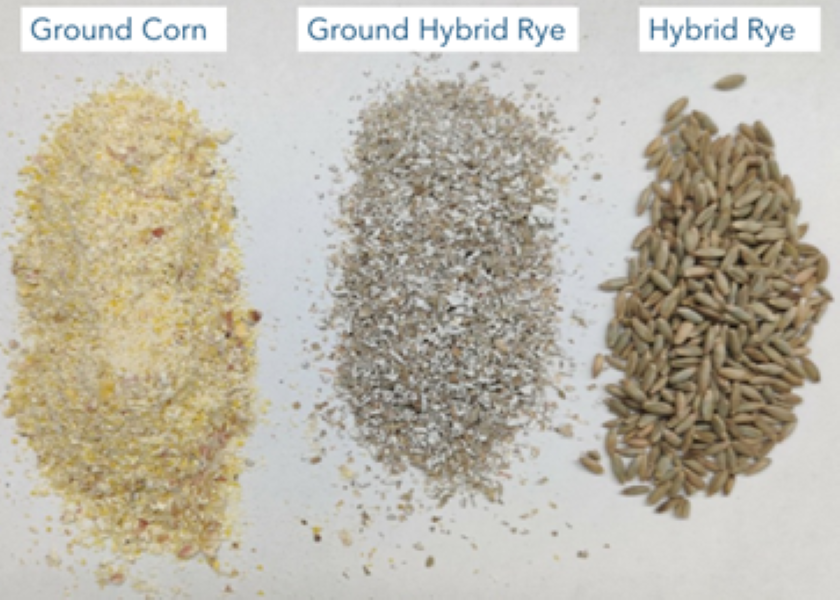Hybrid Rye Gains Traction as Alternative Feedstuff for Pigs

By Kiah Berg, a nutritionist for Pipestone
Hybrid rye has been gaining traction as an alternative feed stuff in the upper Midwest. Why? Compared to conventional rye, the hybrid varieties have shown to be better yielding, less susceptible to ergot (a grain fungus) and more drought tolerant. From an agronomic standpoint, hybrid rye can reduce the carbon footprint of the crop land due to lower water and pesticide use, while having lower drying requirements due to its harvest in mid-summer. As swine producers, it also allows for earlier spreading of manure compared to tillable land harvested in the fall.
From a feeding value, hybrid rye is categorized as an energy ingredient similar to corn but has a higher fiber component like wheat or barley. With increasing interest from producers to plant hybrid rye, determining if hybrid rye can partially or fully replace corn in the diet was needed.
We conducted an experiment where we replaced 0%, 40%, 70% or 100% corn with hybrid rye to determine the energy value relative to corn and evaluate impacts on growth and carcass fat quality. Increased hybrid rye in the diet decreased the energy content of the diet, which lowered average daily gain and hot carcass weight.
This indicates that if feeding hybrid rye, fat will need to be added to the diet to achieve similar caloric intake as a corn-soybean meal-based diet, or the inclusion level will need to be at a lower concentration if the producer wants to maintain similar growth performance. This data demonstrated that hybrid rye can be valued at 93% the energy of corn.
Small grains (wheat, barley, rye) are known to create a hard, white fat on the carcass compared to corn and corn by-product diets. Iodine value is a measure of carcass fat firmness and quality, where a lower value equates to harder fat and firmer pork bellies. With the opportunity to evaluate fat quality at WholeStone Foods, we learned as hybrid rye increased in the diet, the lower the iodine value dropped. This is a great attribute for the carcass when feeding hybrid rye.
When evaluating a feed ingredient from a sustainability lens, we can calculate a carbon dioxide equivalent (CO2e) value for each ingredient. As we look at the amount of CO2e per diet, we can calculate the amount of CO2e per pound of gain. In this trial, we showed that even with the slower growth, each pig took less CO2e per pound of gain, demonstrating the hybrid rye is a more carbon-friendly feed ingredient.
As we look to the future and continue to improve the database of feed ingredient CO2e factors, our goal is to help producers find the right combination of growth performance, carcass quality and sustainability that fits their operation.

Source: Pipestone
More from Farm Journal's PORK:
Humic Substance May Improve Finishing Pig Productivity, Kent Nutrition Group Says
New Monounsaturated Soybean Oil Works Well in Pig Diets
Gruel Creep Feeding Accelerates Growth, Alters Intestinal Health of Young Pigs







